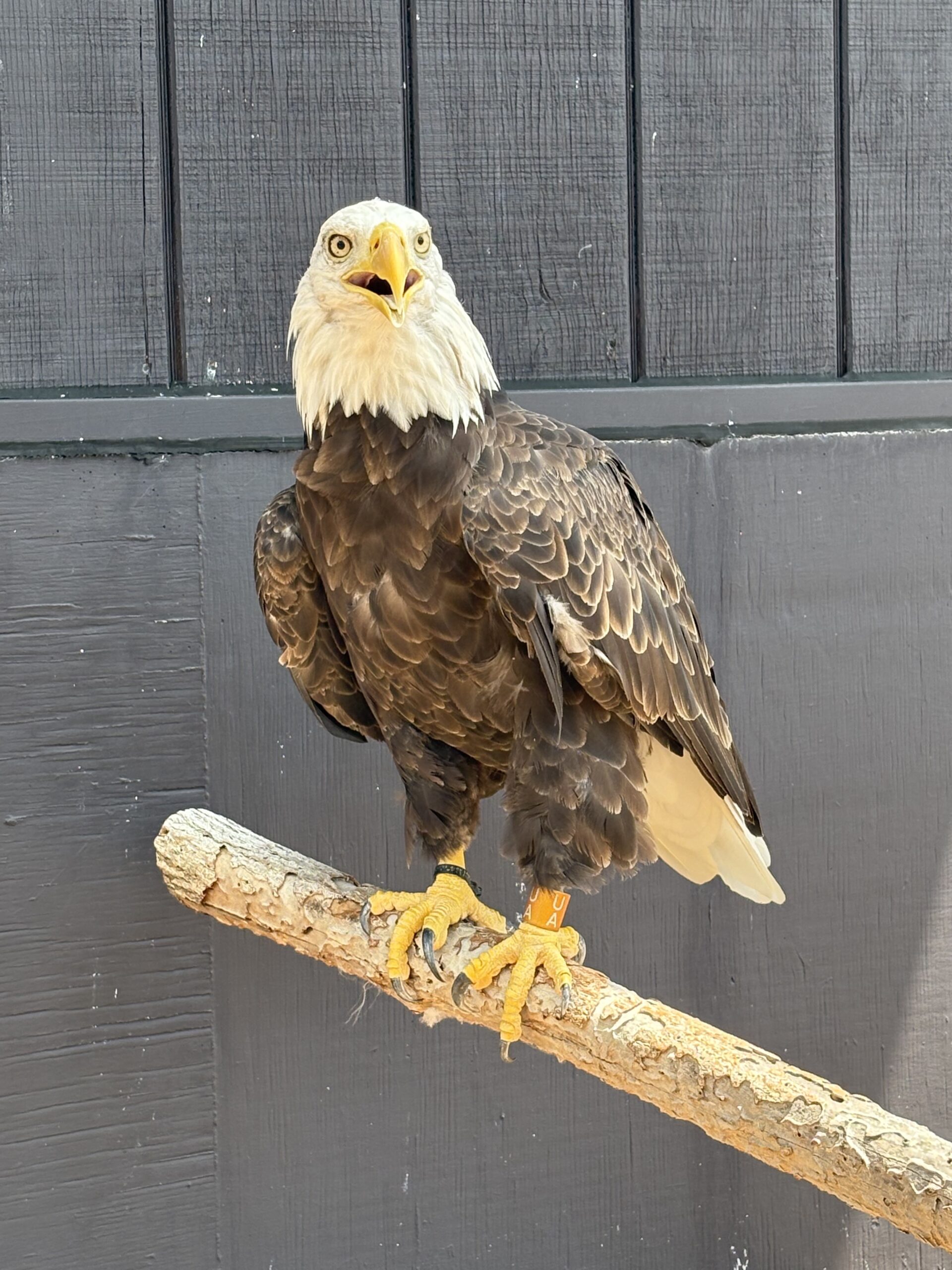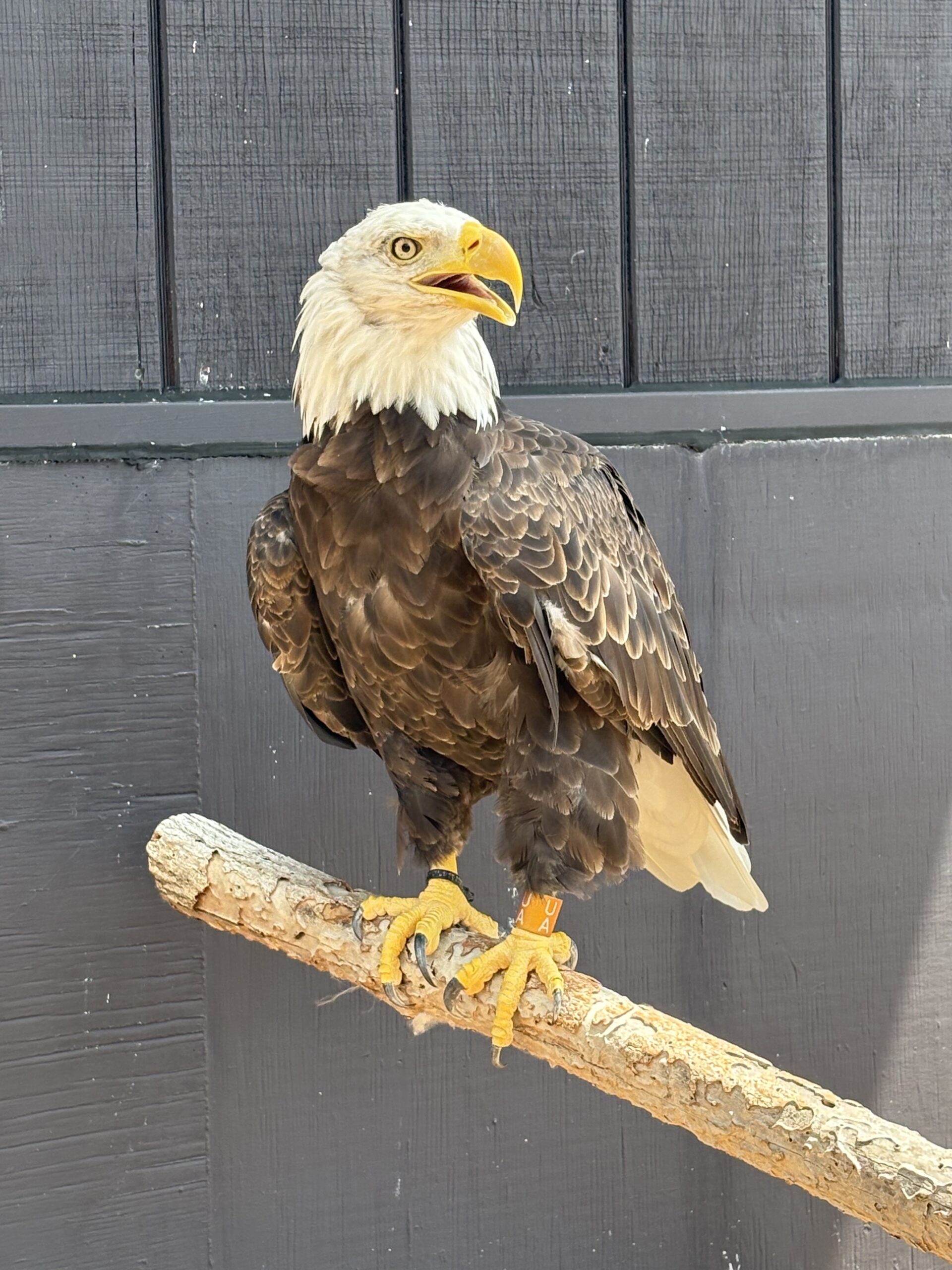AQUILA
Species: Haliaeetus leucocephalus, Bald Eagle • Hatch Year: 1993 (estimated) • Sex: Male • Disability: Right wing injury – Gunshot
Aquila’s journey began in the early 1990s when he was found with a gunshot wound to his right shoulder. At the time, he was barely out of the nest, likely a newly-fledged eaglet. Though he received care and survived the injury, the damage left him with limited flight ability, making him non-releasable to the wild.
Aquila spent the next chapter of his life serving as an educational ambassador at Raptor Rehabilitation of Kentucky, where he helped teach the public about the threats bald eagles face and the importance of protecting them. In July 2017, he found a new home with at AEF.
Today, Aquila lives at our headquarters, continuing his role as an ambassador and inspiring visitors with his resilience and strength. His story is a powerful reminder of the challenges wild eagles face and how we can help protect them.
ABOUT THIS SPECIES
Bald Eagles were placed at the center of the Great Seal of the United States in 1782! Since then, they have served as the pride of America’s skies and the symbol of all that America stands for.
Bald Eagles obviously aren’t bald! “Bald” in this sense refers to an Middle English word that means “white headed.” When eagles fledge the nest at between 10 and 13 weeks of age, they are primarily all brown. An Eagle gets its full white head and tail feathers and yellow beak and eyes at around four to five years of age.
Bald Eagles typically mate for life. Usually, they will only look for a new mate if their faithful companion dies, but sometimes a new mate is chosen in a territorial fight over a nest.
In building a nest, Bald Eagles will choose a ‘super-canopy’ tree—one rising above the rest— near to water, with sturdy limbs and a commanding view of the surrounding terrain. Typical nest heights are 50-125 feet high. They make use of twigs, grasses, soft mosses and feathers in making their nests and normally return to the same nest each year during breeding season and add new materials to it. A new eagle pair’s nest usually measures about five feet in width and two feet in depth. As they add to it year after year, however, it can reach widths of over ten feet and weigh up to a ton or more. On the Channel Islands, where large trees are very scarce, Bald Eagles have built their nests on cliffs; and, in some coastal areas of Alaska and Canada where there are few tall trees, Bald Eagles will nest on the ground, using whatever materials are available.






